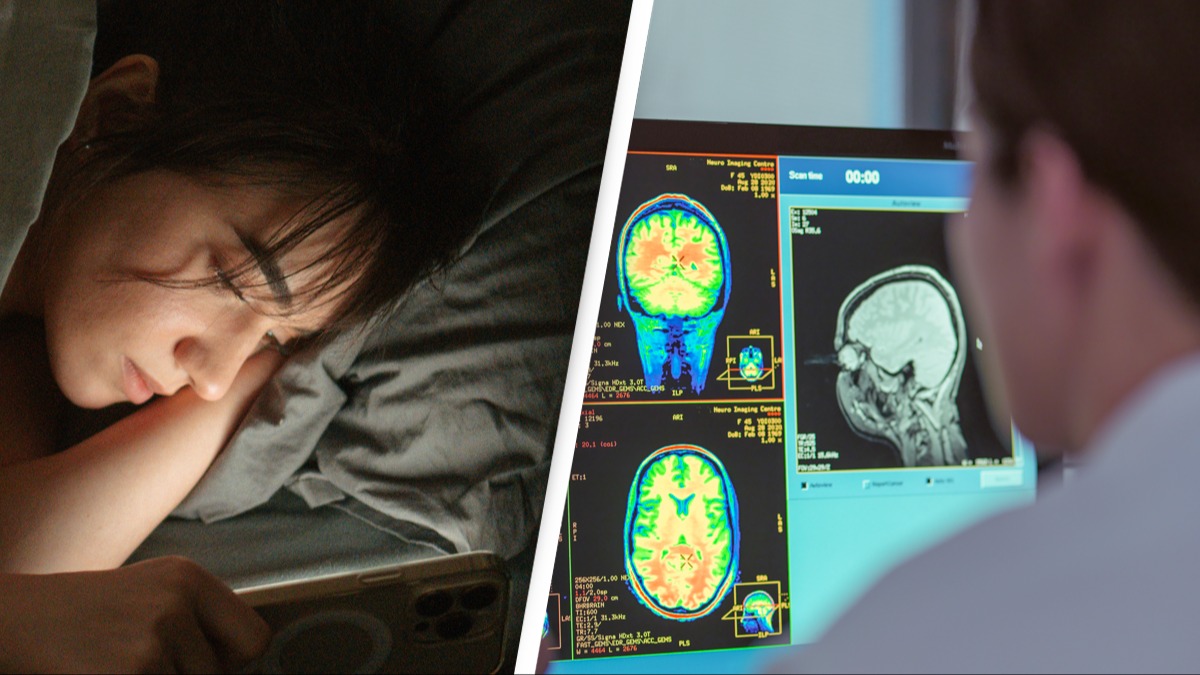Disclaimer: This article is for informational purposes only and is not intended as medical advice, diagnosis, or treatment. The findings mentioned are based on limited scientific data and should not be interpreted as definitive conclusions. Always consult qualified medical professionals for any health-related concerns.
For centuries, humans have pondered what occurs in the brain during the final moments of life. Now, thanks to a rare and unexpected scientific event, we may be closer to answering this profound question. A pioneering study led by Dr. Ajmal Zemmar, a neurosurgeon, has recorded human brain activity at the time of death—an observation never captured before. The findings were published in the peer-reviewed journal Frontiers in Aging Neuroscience and are reshaping how science approaches the definition of death and the potential experiences during a person’s final moments.
Accidental Yet Historic Discovery
The pivotal data emerged not from a planned experiment, but rather a unique medical circumstance. In 2016, an 87-year-old male patient suffering from epilepsy underwent continuous electroencephalography (EEG) to monitor brain activity during seizures. During the course of this monitoring, the patient unexpectedly experienced a fatal cardiac arrest. This provided researchers with a rare opportunity to record brain activity before, during, and after clinical death.
In total, about 900 seconds (15 minutes) of EEG data was collected. The most notable patterns were observed in the 30 seconds before and after the patient’s heart stopped, revealing unexpected activity across several brainwave frequencies.
Brainwave Activity: An Unexpected Pattern
One of the study’s most significant revelations was the continued presence of organized brainwave activity after the heart had ceased beating. The team observed sustained activity across multiple frequency bands, including gamma, alpha, beta, delta, and theta waves. Of particular interest were gamma waves, typically associated with high-level cognitive functions such as memory recall, attention, and perception.
This suggests that the human brain may remain active and possibly conscious for a short period following the cessation of cardiac function. These findings challenge the long-standing belief that brain activity ends immediately after the heart stops, and they open new discussions around the biological definition of death.

Could This Explain Near-Death Experiences?
The patterns observed in the brain’s gamma waves have led scientists to speculate about potential explanations for near-death experiences (NDEs)—vivid and often emotionally intense perceptions reported by individuals who have been revived after cardiac arrest or trauma. Some of these accounts describe seeing memories, bright lights, or sensations of peace.
While this study does not confirm such experiences, the EEG data indicates that the brain may be capable of initiating a brief period of memory processing or cognitive function as it shuts down. Dr. Zemmar has proposed that this could represent a “life review” phenomenon, though he emphasizes that more research is needed.
Challenging the Definition of Death
This discovery also raises crucial questions about how we define the moment of death. Historically, death has been determined based on cardiac arrest and the cessation of respiration. However, if brain activity continues after these functions stop, medical protocols and ethical frameworks—particularly those related to organ donation and end-of-life care—may need reconsideration.
Medical institutions worldwide follow strict guidelines for declaring death, especially when it involves organ retrieval. These findings could potentially lead to new criteria that take into account residual brain activity.

The Study’s Limitations
Despite its groundbreaking nature, this study is based on a single case involving a patient with epilepsy and brain swelling. These preexisting conditions could have influenced the recorded brainwave activity. As a result, scientists urge caution in generalizing the findings to all humans.
The researchers have acknowledged that larger-scale studies are essential to verify these observations across diverse populations and health conditions. Until then, the data should be interpreted as a promising starting point, not conclusive proof.
Supporting Evidence from Animal Research
Interestingly, this is not the first time unusual brain activity has been documented near death. A 2013 study conducted on rats showed a burst of gamma wave activity in the 30 seconds after the heart stopped. This consistency between humans and animals suggests that the phenomenon might be a shared biological process—perhaps part of an evolutionary mechanism.
Animal studies provide valuable opportunities for ethical and controlled investigations, potentially offering additional insights into how the brain transitions from life to death.
Implications for Medical Science and Ethics
The research conducted by Dr. Zemmar and his team could have far-reaching implications for medicine. If further studies support the idea that consciousness persists momentarily after cardiac death, this may influence how we handle palliative care and how we approach discussions about death with patients and families.
Ethical questions also arise regarding informed consent and end-of-life protocols. For instance, would patients want to know that their brains may continue functioning after clinical death? Could this knowledge affect how we manage pain relief or sedation in terminal cases?
Philosophical and Emotional Reflections
While the study is scientific at its core, it has prompted philosophical and emotional contemplation. For many, the idea that the brain may engage in meaningful mental activity at the end of life is comforting. It suggests that our final moments may include a mental farewell, potentially filled with cherished memories or reflective thoughts.
Dr. Zemmar has expressed that, regardless of the specific content of these thoughts, the possibility that our brains remain active for a short time may offer emotional closure to families and loved ones facing loss.
However, he also cautions against assuming that all individuals experience the same neurological patterns or emotions at death. Personal history, neurological health, and environmental factors can all influence what the brain experiences in its final moments.
What’s Next? Future Research Directions
This case has opened the door for a new field of research focused on brain activity at the end of life. Future studies may involve EEG monitoring of terminally ill patients under hospice care (with consent), or the use of advanced imaging technology to map neurological changes in real time.
Key questions scientists hope to explore include:
-
How long does brain activity persist after death?
-
Is the activity conscious, or is it simply electrical?
-
Can specific memories be identified in these final bursts?
-
Do all humans show the same patterns regardless of health conditions?
By answering these questions, researchers may eventually establish reliable indicators of when consciousness truly ends, which could redefine legal and ethical standards in medicine and society.

Conclusion: A Scientific Milestone
This first-ever recording of human brain activity during death is a milestone in neuroscience and medicine. Although based on a single case, it provides a valuable glimpse into a previously inaccessible moment. The findings challenge traditional ideas about the boundary between life and death, offering fresh perspectives on what it means to die.
More importantly, it opens a respectful and science-based conversation about death—one of life’s most personal and universal experiences. As research continues, the hope is that we can better understand and perhaps find comfort in the final moments of human consciousness.


